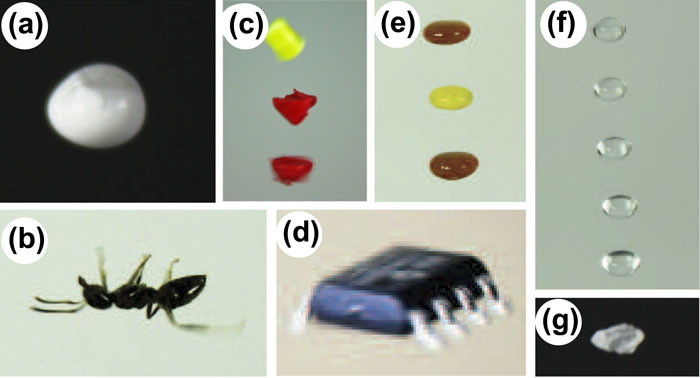New research from provides instructions on how to build a low cost 3D printed levitator. The device uses acoustic waves to hold samples such as fluids, insects or small electrical components.
Creating a microgravity environment
The levitator is intended to facilitate studies in chemistry, spectroscopy or organisms in microgravity. The scientists write, “This technology has been previously restricted to a couple of research labs but now you can make it at your home.”
In a video accompanying the research, Dr. Asier Marzo, from the University of Bristol’s Department of Mechanical Engineering, demonstrators applications of the levitator including the suspension of an ant. 3D Printing Industry caught up with Marzo earlier this year to discuss how the technology works and answer the question most likely on your mind right now – can you 3D print a Death Star style tractor beam?

The TinyLev was created a team from the University of Bristol’s Faculty of Engineering and School of Physics. In the research paper the authors note,
“Current levitators are constructed using Langevin horns that need to be manufactured to high tolerance with carefully matched resonant frequencies. This resonance condition is hard to maintain as their temperature changes due to transduction heating.”
Furthermore, the lab scale levitators operate at a high voltage, often greater than 100 volts. These factors mean that using Langevin style devices can be problematic.
The TinyLev by comparison, uses low-voltage (ca. 20 V) ultrasonic transducers. The device functions at 40 kHz in air and “can trap objects above 2.2 g/cm3 density and 4 mm in diameter whilst consuming 10 W of input power.”
Application for container-less transportation and nano-technology
Unlike levitating devices that use magnets the TinyLev works with sound waves. This enables a wider range of materials to be levitated than solely those which are magnetic. Other forms of levitation also have limitations, for example aerodynamic levitation can, “agitate and alter” samples while electrostatic levitation requires complex control systems.

The authors explain that airborne acoustic levitation is advantageous due to its versatility. The range of applications includes, container-less transportation, pharmaceutics, nano-assemblies, or “even small animals.”
“Acoustic levitation of liquids can be used to study new fluid dynamics and measure their surface tension or the rheological properties of surfactant solutions. Other applications include the formation of levitated ice flakes, eutectic crystal growth in molten metals, evaporation of binary liquids, the study of phase transitions, and the rapid crystallization or ionization of samples.”
The levitator uses 72 transducers mounted on a 3D printed frame. The researchers explain, “We selected 3D printing since it easily allowed us to obtain accurate sockets for the transducers that fix their position and orientation angle. 3D printing the frame in one piece provides stability and simplicity.” The video accompanying the research shows an Ultimaker 2 Extended 3D printer used to make the levitator.
If you want to make your levitator then the bill of materials, STL file and instructions are all available here.
The full paper, “TinyLev: A multi-emitter single-axis acoustic levitator” can be read here.
Don’t want to miss the latest 3D printing applications and other news? We’re on Facebook here, and you can also follow us on Twitter.
For daily news direct to your inbox sign up to our 3D Printing Industry newsletter here.
If you’re looking for a career in the 3D printing industry, register now for our 3D printing industry jobs platform.



